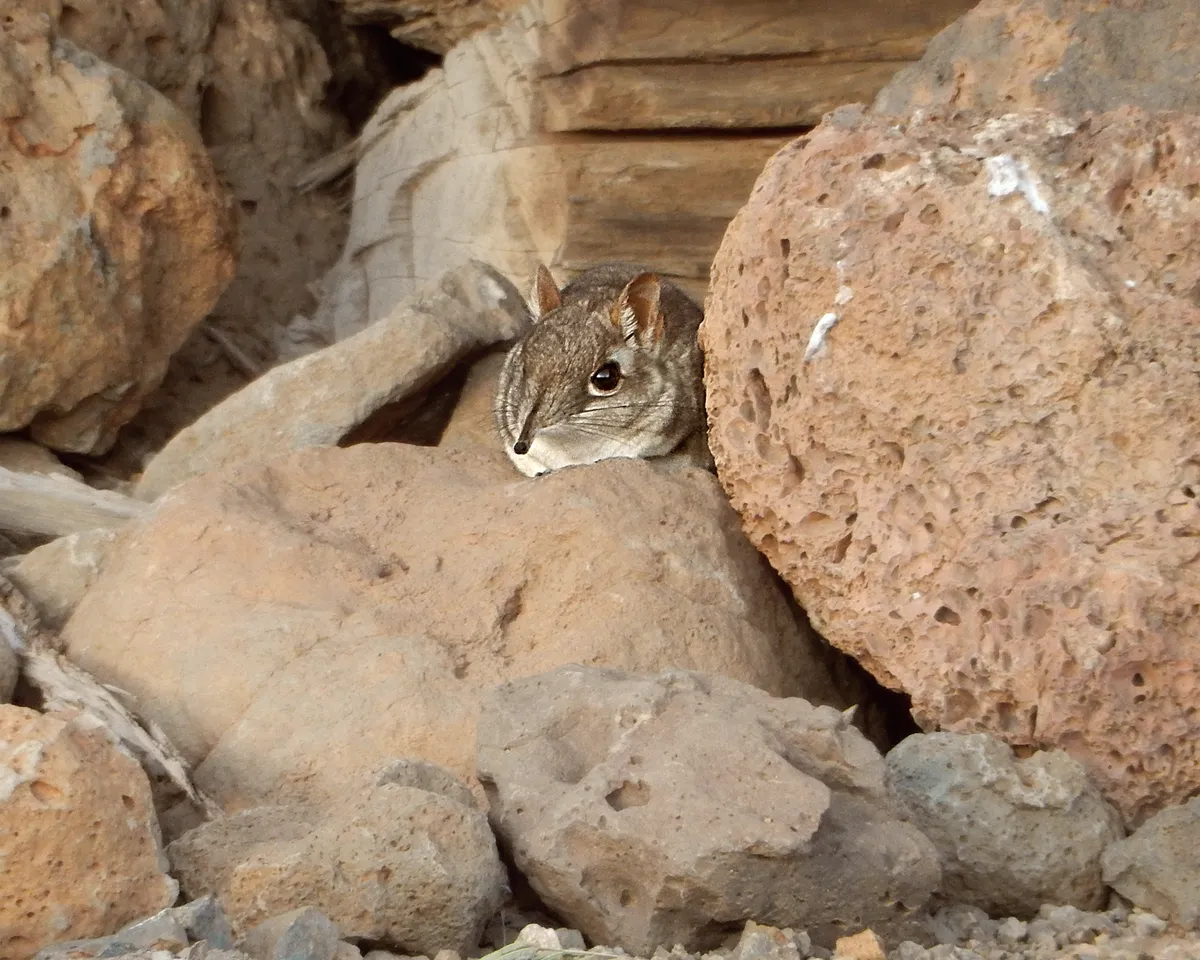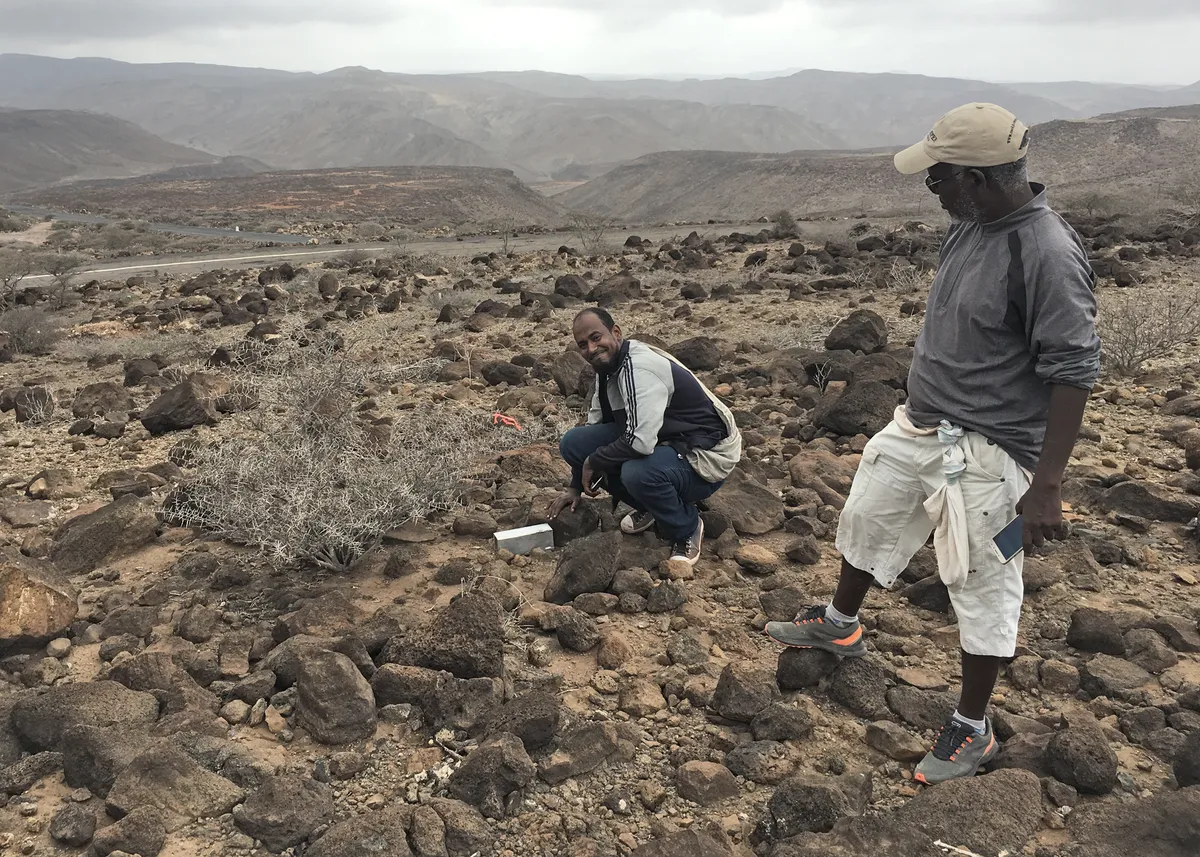Sengis, also known as elephant-shrews, are a group of small insectivorous mammals. The Somali sengi had not been seen in the wild there for half a century, and was considered lost to science. It was known from only 39 museum specimens, and was included in Global Wildlife Conservation's (GWC) 25 most wanted lost species.
However, conservationists had received tips that revealed the species may be in Djibouti and a research team set out to find it.
“For us living in Djibouti, and by extension the Horn of Africa, we never considered the sengis to be ‘lost,’ but this new research does bring the Somali sengi back into the scientific community, which we value,” says Houssein Rayaleh from Association Djibouti Nature. “For Djibouti this is an important story that highlights the great biodiversity of the country and the region and shows that there are opportunities for new science and research here.”
Rayaleh is a Djiboutian research ecologist and conservationist, and knew he had seen the animal before, and local Djiboutian people were able to identify the animal from a series of photographs during interviews.
The team set out 1,259 traps at 12 locations, baiting them with a concoction of peanut butter, oatmeal and yeast, and caught a Somali sengi in the very first trap they set.
“It was amazing,” says Heritage Steven Heritage, a research scientist at the Duke University Lemur Center and lead author on the paper. “When we opened the first trap and saw the little tuft of hair on the tip of its tail, we just looked at one another and couldn’t believe it. A number of small mammal surveys since the 1970s did not find the Somali sengi in Djibouti—it was serendipitous that it happened so quickly for us.”

A total of 12 sengis were seen during the survey, and the team calculated that the abundance of the species is about the same as other sengi species.
When capturing these sengis, the team undertook DNA and morphological analysis to check whether they were in fact from the Somalian species and not another species. For example, a key difference between the Somali sengi and the rufous sengi (Elephantulus rufescens) is the tuft of fur on the former's tail. The rufous sengi is also found in Somalia, as well as Ethiopia, South Sudan, Kenya, Tanzania and Uganda.

As part of the DNA analysis they also discovered that the lineage of the Somali sengi species is most closely related to the sengis that live in Morocco and South Africa, which would change the genus from Elephantulus to Galegeeska.
The alternative name of sengis is elephant-shrews, due to their long trunk-like noses and resemblance to shrews. Although sengis are neither elephants nor shrews, they are actually closely related to elephants, aardvarks and manatees.
With the confirmation that its range extends out of Somali and into Djibouti (and possibly into Ethiopia), the team recommends that the Somali sengi's status on the IUCN Red List of Threatened Species is updated from Data Deficient to Least Concern.
Learn more about rare African wildlife:
- Hirola guide: where they live, why they're endangered and conservation work being done to save them
- News (2020): Virunga National Park closes to tourism to protect mountain gorillas from COVID-19
- News (2019): Lions face new poaching threat for body parts
- News (2019): Viral videos of pet lemurs may be fuelling illegal trade of endangered species
Heritage and Rayaleh are planning another expedition for 2022, where they hope to GPS radio-tag individual sengis and learn more about their behaviour and ecology. Beyond that, the researchers are planning to set up a monitoring programme, and to figure out which other countries this species may be living in.
“Usually when we rediscover lost species, we find just one or two individuals and have to act quickly to try to prevent their imminent extinction,” said Robin Moore, one of GWC’s Search for Lost Species program leads.
“This is a welcome and wonderful rediscovery during a time of turmoil for our planet, and one that fills us with renewed hope for the remaining small mammal species on our most wanted list, such as the DeWinton’s golden mole, a relative of the sengi, and the Ilin Island cloudrunner.”
The ‘rediscovery’ of the Somali sengi by science is a tribute to another member of the research team and coauthor of the paper, Galen Rathbun from the California Academy of Sciences. Described as a legendary sengi researcher, he had spent decades of his life studying this mammal group, was the long-time chair of the IUCN SSC Afrotheria Speciallist Group, and involved in the discovery of two new sengi species in 2008 and 2016. He was also involved in studying and conserving marine mammals such as sea otters, dugongs and manatees. He sadly passed away only a few months after the Djibouti expedition.
Main image: A Somali sengi at Assamo in Djibouti. © Steven Heritage
